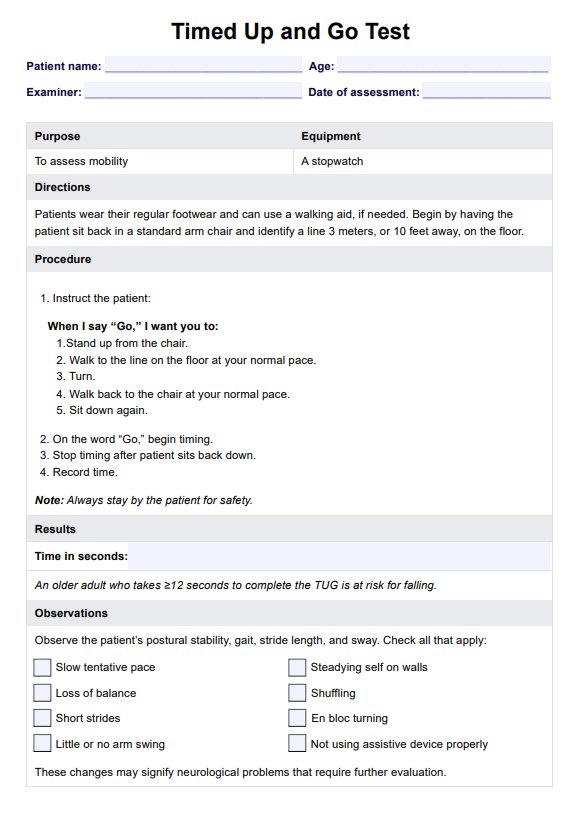Yes. On every test date, physical therapists are advised to be present to support the patient as they administer this general physical performance test and give them breaks after the practice tests.

Timed Up and Go Test
Use the Timed Up and Go Test to assess whether your elderly patients are at risk of falling and create a care plan accordingly.
Timed Up and Go Test Template
Commonly asked questions
The test was initially designed to predict falls in frail elderly patients but is not limited to that group. It is also used for individuals who have had a stroke, are recovering from hip surgery, have mobility issues at a younger age, or have conditions such as Parkinson’s disease.
The Timed Up and Go (TUG) test measures basic mobility by timing how long it takes a person to stand up, walk a short distance, and sit down. The Dynamic Gait Index (DGI), on the other hand, assesses a person’s ability to adapt gait to changing task demands, such as walking while turning the head or stepping over obstacles.
EHR and practice management software
Get started for free
*No credit card required
Free
$0/usd
Unlimited clients
Telehealth
1GB of storage
Client portal text
Automated billing and online payments











